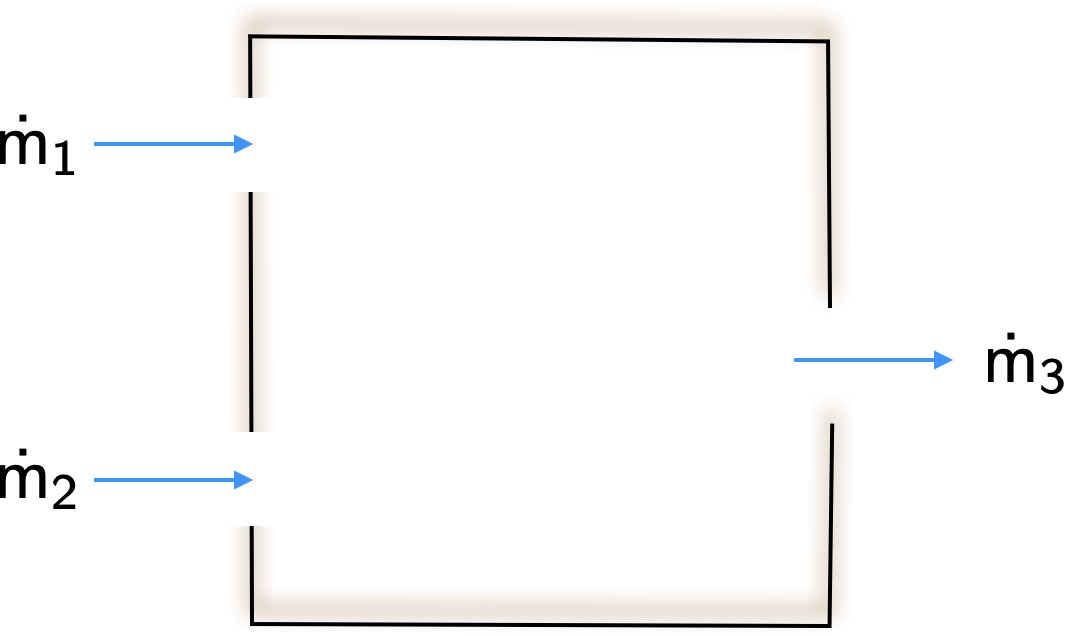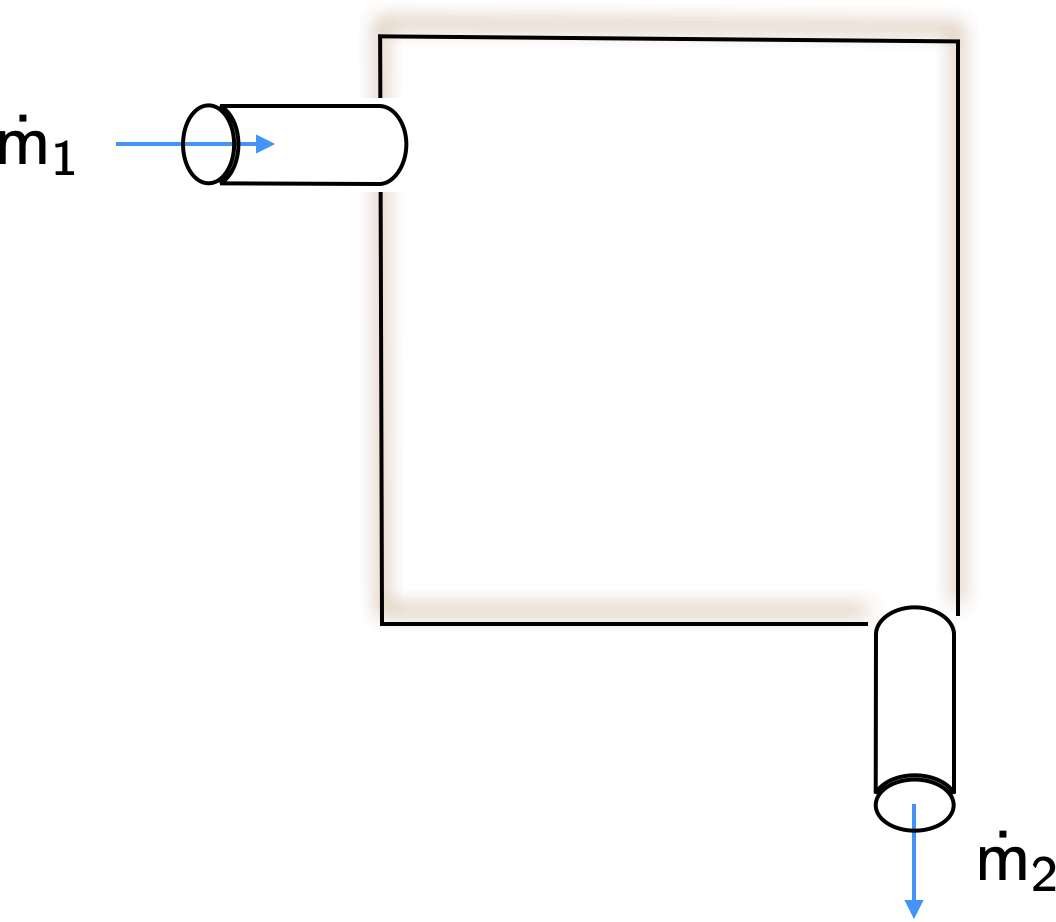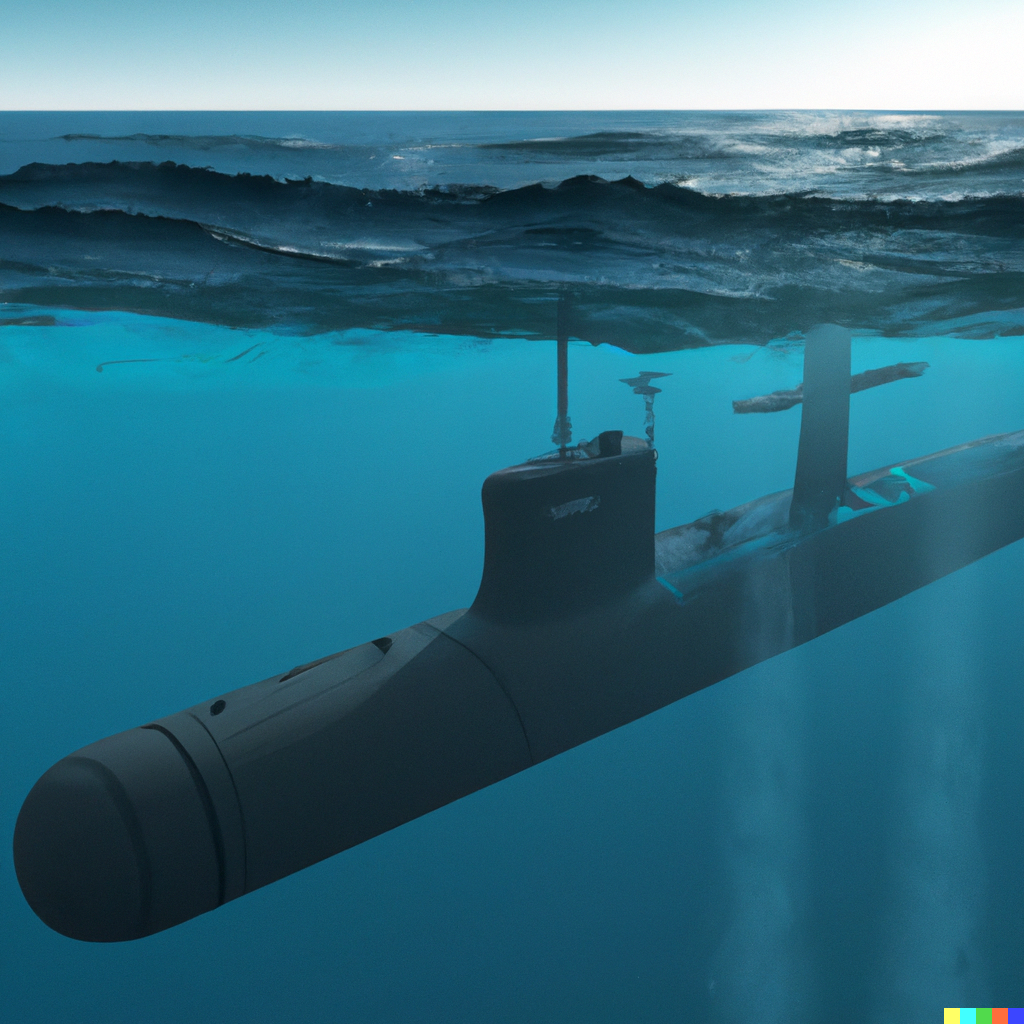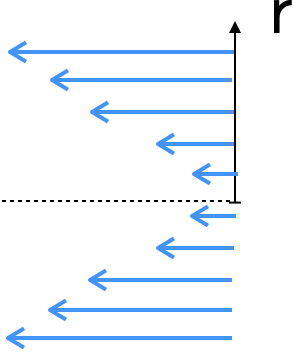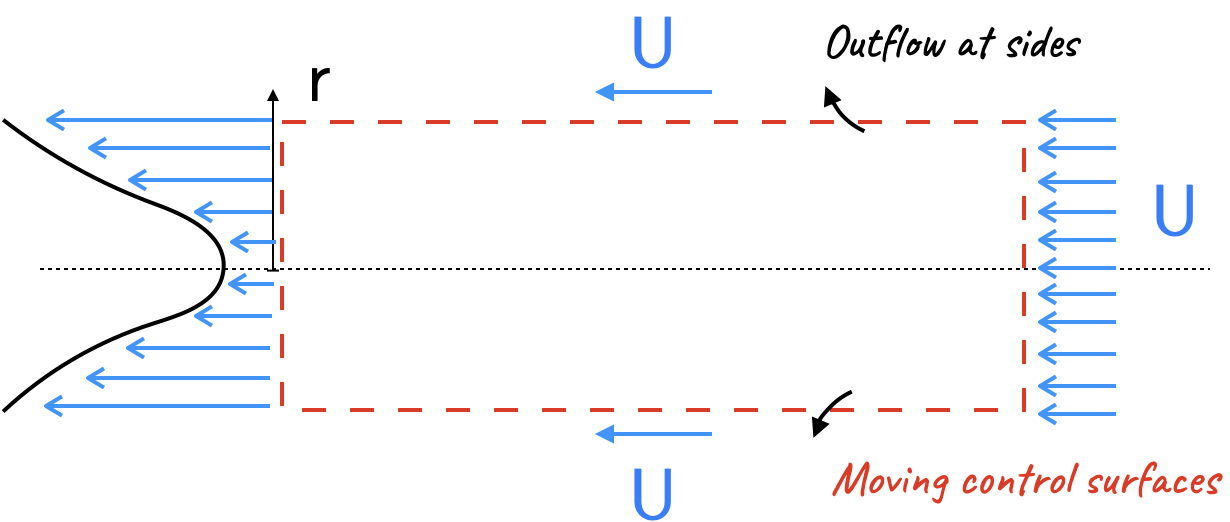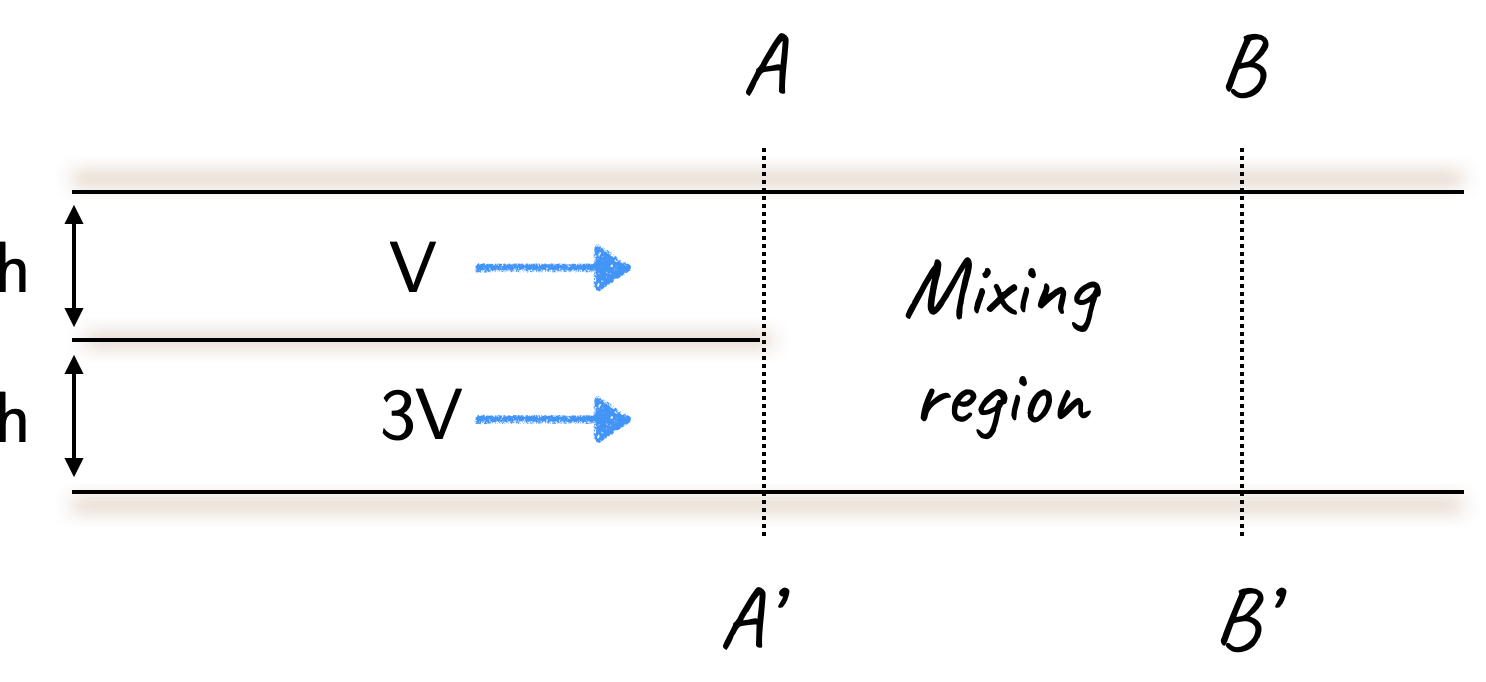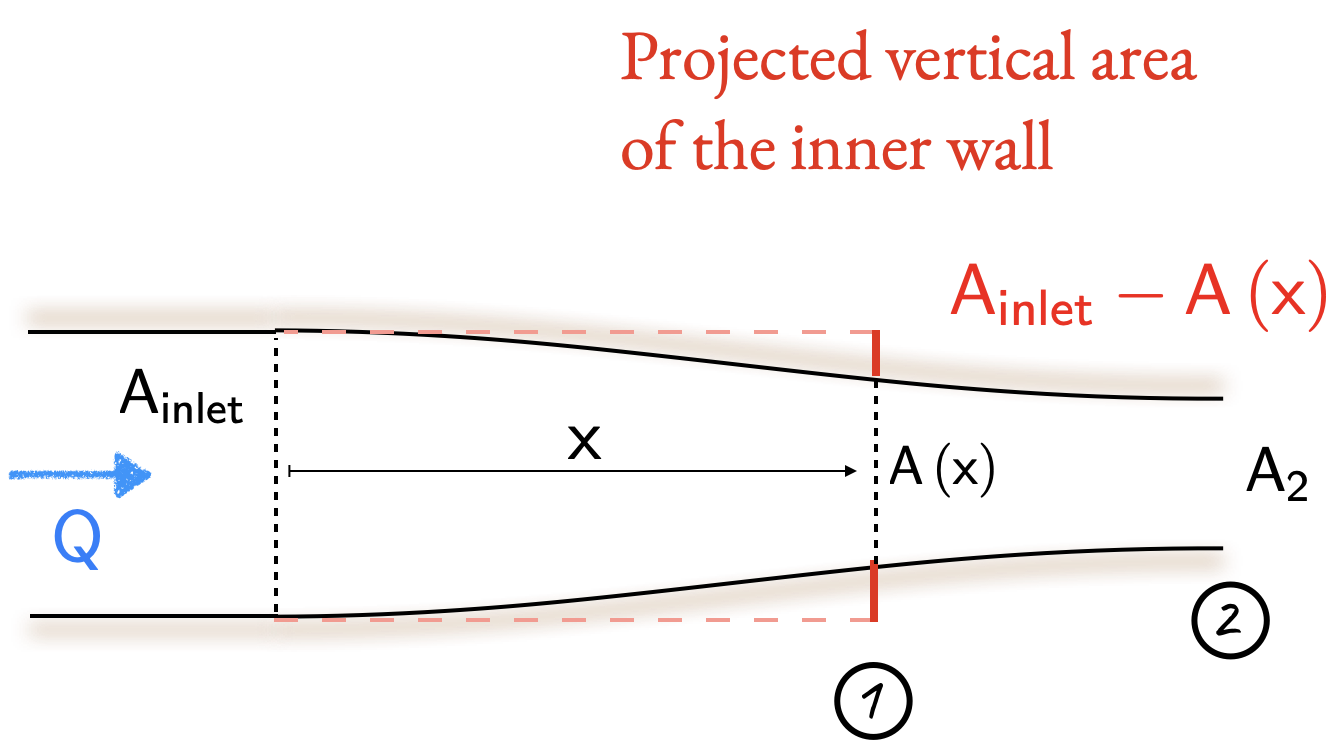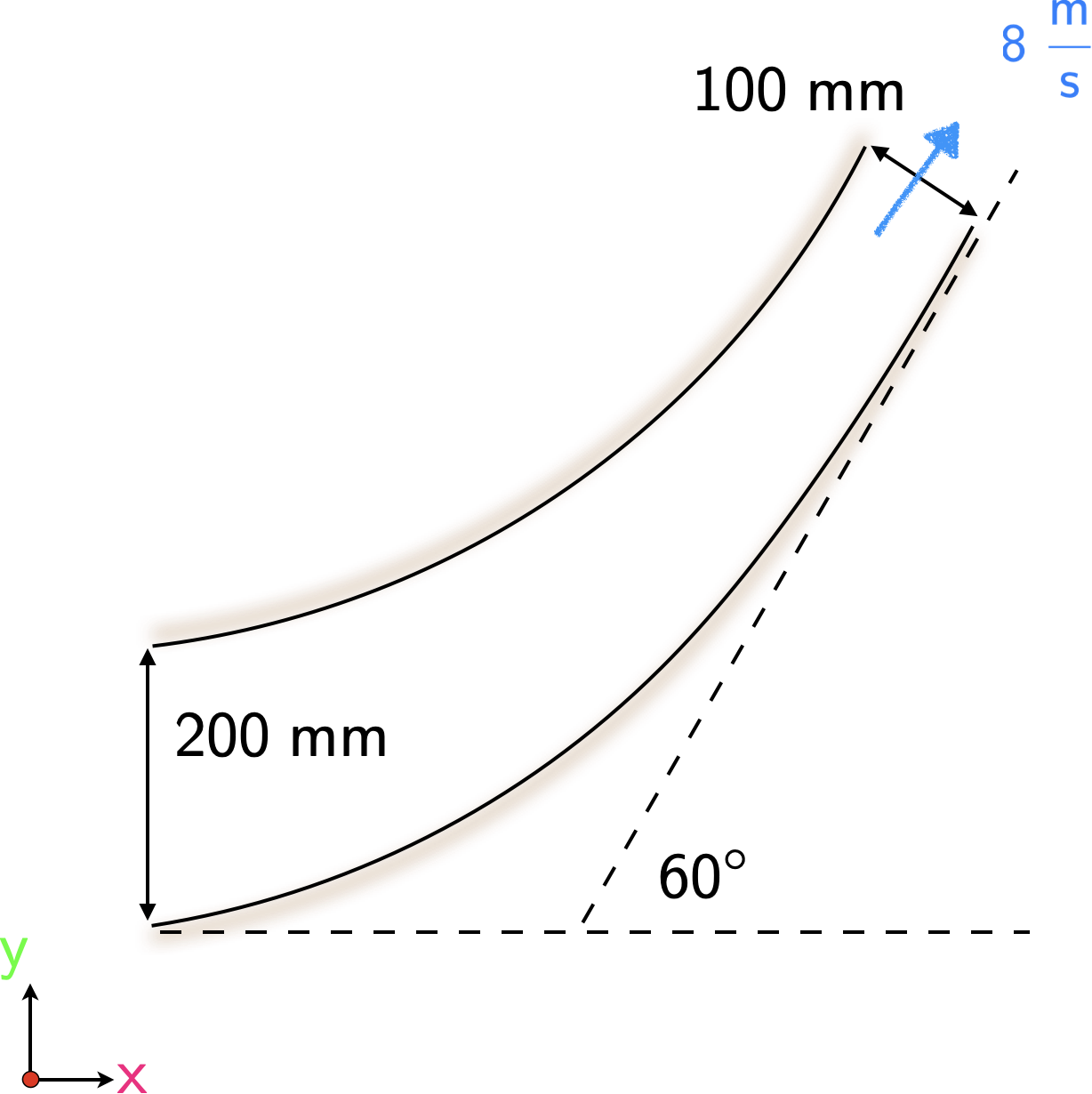Solution
Solutions are captured below.
The question states that the nozzle is designed to produce a parallel jet of water. Thus, at the exit we have parallel streamlines and consequently no transverse pressure gradient.
\[
\large
\require{color}
A_1 = \frac{\pi }{4} \left(0.2\right)^2 = 0.031416 \; m^2, \; \; \; \; \; A_2 = \frac{\pi}{4} \left( 0.1 \right)^2 = 0.007854 \; m^2.
\]
The velocity at the entrance can be worked out via continuity. Since we are given no information on the density, we assume the flow is incompressible and therefore the volumetric flow rates are equal. This yields
\[
\large
\require{color}
A_1 {\color[rgb]{0.059472,0.501943,0.998465}v}_1 = A_2 {\color[rgb]{0.059472,0.501943,0.998465}v}_2 \; \; \; \Rightarrow \; \; \; {\color[rgb]{0.059472,0.501943,0.998465}v}_1 = \frac{A_2 {\color[rgb]{0.059472,0.501943,0.998465}v}_2}{A_1} = \frac{0.1^2 \times {\color[rgb]{0.059472,0.501943,0.998465}8}}{0.2^2} = {\color[rgb]{0.059472,0.501943,0.998465}2 \; m/s}.
\]
To work out the massflow rate, we use continuity
\[
\large
\require{color}
\dot{m} = {\color[rgb]{0.918231,0.469102,0.038229}\rho} A_2 {\color[rgb]{0.059472,0.501943,0.998465}v}_2 = {\color[rgb]{0.918231,0.469102,0.038229}1000} {\color[rgb]{0.918231,0.469102,0.038229} \frac{kg}{m^3}} \times 0.007854 m^2 \times {\color[rgb]{0.059472,0.501943,0.998465}8} {\color[rgb]{0.059472,0.501943,0.998465} \frac{m}{s}} = 62.83 \frac{kg}{s}
\]
As this problem makes no statement on pressure losses within the circular nozzle, we can write
\[
\large
\require{color}
{\color[rgb]{0.315209,0.728565,0.037706}p}_1 + \frac{1}{2}{\color[rgb]{0.918231,0.469102,0.038229}\rho} {\color[rgb]{0.059472,0.501943,0.998465}v}_1^2 = {\color[rgb]{0.315209,0.728565,0.037706}p}_2 + \frac{1}{2}{\color[rgb]{0.918231,0.469102,0.038229}\rho} {\color[rgb]{0.059472,0.501943,0.998465}v}_2^2
\]
\[
\large
\require{color}
\Rightarrow {\color[rgb]{0.315209,0.728565,0.037706}p}_1 = 0 + \frac{1}{2} {\color[rgb]{0.918231,0.469102,0.038229}\rho} \left( {\color[rgb]{0.059472,0.501943,0.998465}v}_2^2 - {\color[rgb]{0.059472,0.501943,0.998465}v}_1^2\right)
\]
\[
\large
\require{color}
{\color[rgb]{0.315209,0.728565,0.037706}p}_1 = \frac{1}{2} \times 1000 \times \left(8^2 - 2^2\right) = 30 \; kPa
\]
To calculate the forces, consider the diagram below.
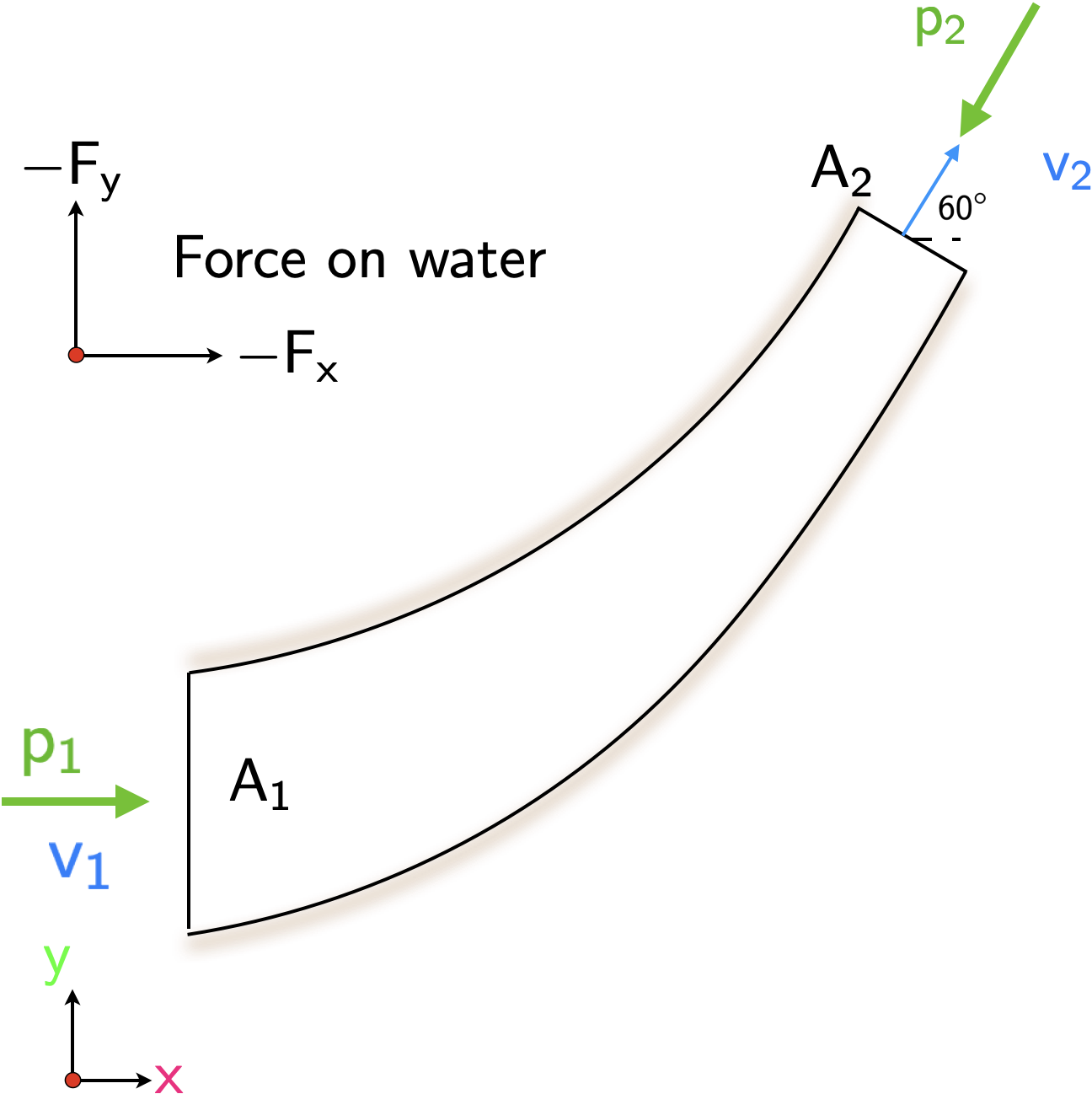
Along the horizontal direction, we have the following steady flow momentum equation
\[
\large
\require{color}
{\color[rgb]{0.315209,0.728565,0.037706}p}_1 A_1 - F_{x} - {\color[rgb]{0.315209,0.728565,0.037706}p}_2 A_2 cos\left(60^{\circ} \right) = \dot{m} {\color[rgb]{0.059472,0.501943,0.998465}v}_2 cos\left(60^{\circ}\right) - \dot{m} v_1
\]
where we have used the gauge pressure. Along the vertical direction we have
\[
\large
\require{color}
0 - F_y - {\color[rgb]{0.315209,0.728565,0.037706}p}_2 A_2 sin\left(60^{\circ}\right) = \dot{m}{\color[rgb]{0.059472,0.501943,0.998465}v}_2 sin\left( 60^{\circ}\right) - 0.
\]
Simplifying the above equations individually we have
\[
\large
\require{color}
F_{x} = \left( {\color[rgb]{0.315209,0.728565,0.037706}p}_1 A_1 - {\color[rgb]{0.315209,0.728565,0.037706}p}_2 A_2 cos\left( 60^{\circ} \right) \right) + \dot{m}\left( {\color[rgb]{0.059472,0.501943,0.998465}v}_1 - {\color[rgb]{0.059472,0.501943,0.998465}v}_2 cos\left(60^{\circ} \right) \right)
\]
\[
\large
\require{color}
\left( 30000 \times 0.031416 - 0 \right) + 62.83 \left(2 - 8 \times 0.5 \right)
\]
\[
\large
\require{color}
942.48 - 125.66 = 816.82 N
\]
and along the vertical direction
\[
\large
\require{color}
F_y = \left(-{\color[rgb]{0.315209,0.728565,0.037706}p}_2 A_2 sin\left( 60^{\circ}\right) \right) - \dot{m}{\color[rgb]{0.059472,0.501943,0.998465}v}_2 sin\left( 60^{\circ} \right)
\]
\[
\large
\require{color}
0 - 62.83 \times 8 \times \sqrt{3}/2 = -435.80N
\]
